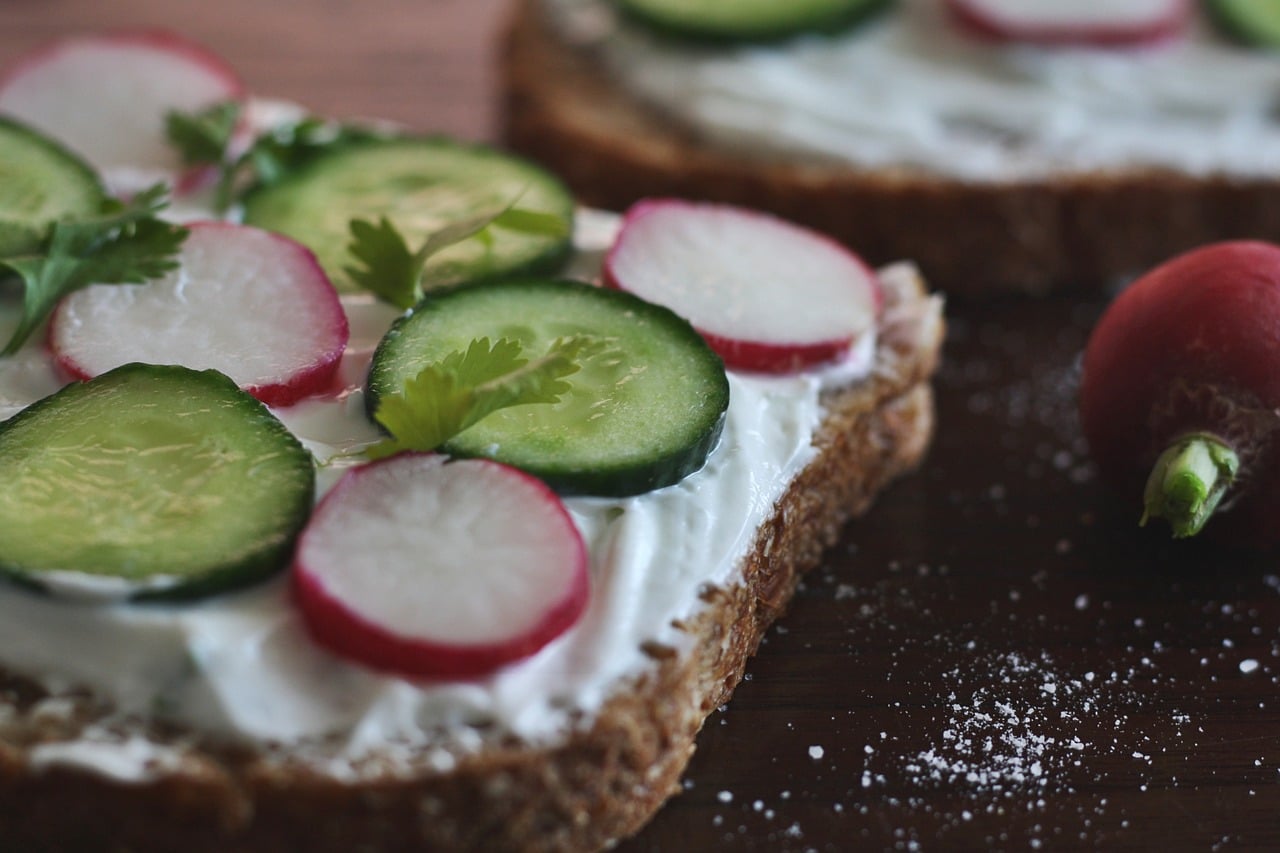Are you confused about the breakfast radish or the French breakfast radish? Read on to find out how breakfast radishes differ from the common radish.
What’s The Difference Between Regular Radishes and French Breakfast Radishes?
Breakfast radish vs. regular radish: Before any confusion throws you off the radish bandwagon for good, yes, there are differences between regular radishes and French breakfast radishes. There are different varieties or cultivars of radishes, and the “regular radish” that is commonly purchased in supermarkets comes from the Cherry Belle cultivar.
The Cherry Belle radish is an heirloom variety of radish and is available year-round, making it a spectacular ingredient for many dishes. Cherry Belle radishes have a stout, rounded body and white flesh. These radishes are naturally tangy, with a hint of sweetness, and are best used for soups or sliced raw for salads.
These are called Cherry Belle radishes because their color resembles cherries. Mature and healthy Cherry Belle radishes have a deep pink shade that is so saturated that you’d think it’s pure red. This cultivar easily germinates, requiring only a week to complete its initial germination.
Let’s take a look at French breakfast radishes. Breakfast radishes can easily be identified as radishes, but they don’t look a lot like the Cherry Belle or supermarket variety.
First of all, these radishes are oblong and not rounded. French breakfast radishes grow to up to four inches in length, though the average is just a little over two inches. The vibrant pink of the French breakfast radish is also a delight, as color enhances food. The leafy greens of the French breakfast radish are also edible, so nothing goes to waste. In contrast with the Cherry Belle, breakfast radishes have a fuller flavor described as nutty and sweet.
Flavor-wise, there is a big difference, as well. While there is a base note for all radishes that make them easy to identify as radishes, the Cherry Belle and the French breakfast radish are worlds apart when you crunch them down. Cherry Belle radishes have a classic radish flavor profile, meaning they are peppery at best. The natural spice makes them awesome for soups and other dishes that require that kick of natural spice. On the other hand, French breakfast radishes are more mellow and are therefore best suited for consumption on their own, with some seasonings. See the big difference between the two?
The peppery kick of regular radishes might make them more challenging for people who don’t like the peppery kick at all. But for those who want to eat radishes like any other plain vegetable, the French breakfast radish presents an opportunity that is both awesome and practical. When the flavor of a vegetable is milder, the vegetable is much easier to consume raw.
Why Are They Called French Breakfast Radishes?
Besides the fact that you can eat French breakfast radishes in the morning, it is believed that historically, the hawkers or sellers of this heirloom radish eat some of their radishes in the morning with some butter (the sweet kind) and some salt. Radishes are naturally nutritious, they’re good for digestion, and there’s always plenty of them in the market. It makes sense that the sellers of these radishes were the ones that popularized how they can be eaten.
During the colonial era in America, French breakfast radishes were also commonly served in the morning. It wasn’t just the French who had an appetite for these sweet radishes; the Dutch immigrants in New York also helped popularized them.
It was in 1879 that the French breakfast radish first made an appearance in French cuisine. Like any other awesome products, it took some time before people got wind of it and developed a taste for it. There was another reason why the French breakfast radish became commonplace. Farmers were able to grow this heirloom variant all year, making it a candidate as a staple food for the day’s specific times. The easier it is to grow a specific type of cultivar, the more it is embraced by the people, and the more it becomes integrated into the cuisine.
This heirloom radish is technically a spring vegetable. Despite this, steps can be taken to grow it all year. As long as the radish is protected from frost, even winter is not a problem. And this is how the French breakfast radish became commonplace not just in France but in other parts of the world.
Do The French Eat Radishes for Breakfast?
Some of the French may have eaten the vegetable for breakfast back in the day, but in modern times, the French have moved on and are not particularly keen on eating radishes at breakfast. This doesn’t mean that they don’t eat French breakfast radishes; it’s just that the radishes have fallen out of disuse for the first meal of the day. French breakfast radishes are still sold throughout Europe, and this heirloom variety continues to be an important crop because it can be grown year-round.
French Breakfast Radish Nutrition?
French breakfast radish size: These radishes typically grow two to four inches when mature. Different types of radishes offer similar nutritional values, despite the differences in their appearance and flavors.
French breakfast radish nutrition:
Are radishes healthy? The short answer is yes; they are perfect and healthy for consumption. There’s nothing wrong with adding radishes to your daily meals. Many cultures have radishes at the center of their cuisines, not only because radishes taste great, but they are also good for your body. Radishes contain trace amounts of B-vitamins, folate, potassium, vitamin K, zinc, magnesium, sodium, manganese, calcium, and phosphorous.
Radishes have also been found to contain anti-cancer compounds. These compounds are present in cruciferous vegetables. The said compounds are said to be responsible for blocking the formation of tumors and preventing the body from producing compounds or substances that encourage cancer cells’ growth. Another study showed that vegetables like radishes could cause cancer cells to self-destruct.

